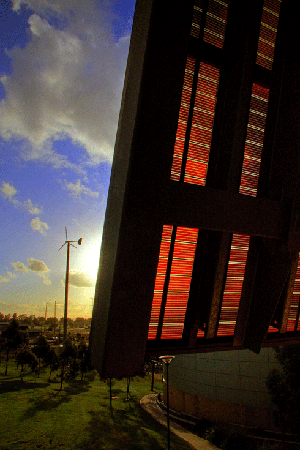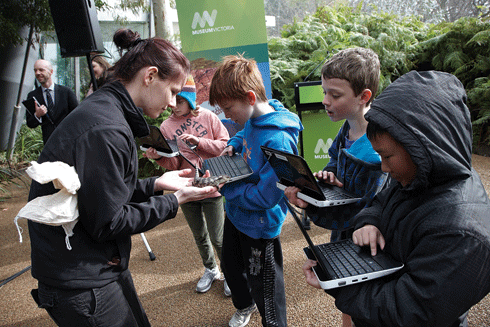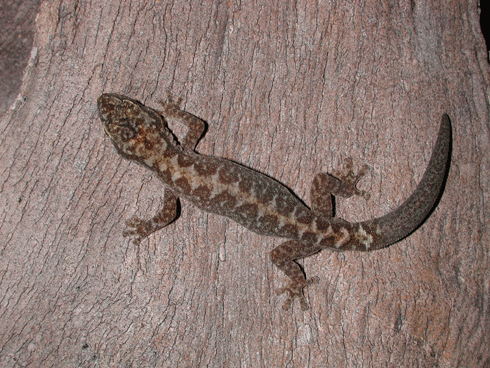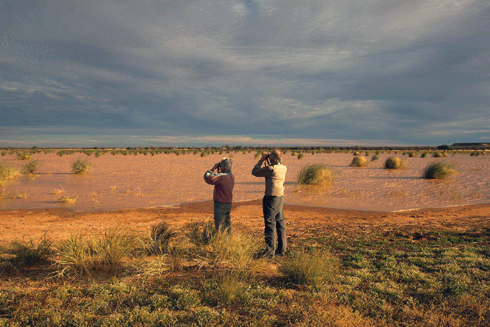
|
Published: 25 October 2010
Ambitious target does not quite measure up
Earlier this year, Beyond Zero Emissions published a report claiming that Australia could become reliant on clean energy by 2020. Is this really achievable?

|
|
A clean energy future for Australia is feasible, but perhaps not within the next decade. Credit: CSIRO
|
Renewable energy technologies have developed rapidly since 2000, and several are mainstream in terms of investment and employment creation. For example, in 2008 and 2009, wind power provided the biggest contribution to new generating capacity in Europe. In China, wind power capacity has doubled every year since 2005. Bioenergy is a significant source of electricity and heat in several European countries. Concentrated solar thermal power (CST) is growing rapidly from a tiny base in Spain and some US states, and is now at the semi-commercial stage of development.
It is now possible to present a serious case for an industrial society to be run mostly or entirely on renewable energy in the foreseeable future. Recent scenario studies have been carried out for individual countries, regions such as Europe and the whole world. However, the costs of such scenarios cannot yet be determined.
Zero Carbon Australia’s Stationary Energy Plan is the first scenario study conducted since 2000 of a transition to 100 per cent renewable stationary energy in Australia.1
The plan’s strengths are the breadth and sheer quantity of work done by the team of volunteer researchers; the insights and ideas it brings; the educational value of some of the technical material presented (eg on CST); and the positive publicity it has gained for renewable energy, at a time when both major political parties are trying to shift climate change and renewable energy off the political agenda.
However, the study has some weaknesses. These include uneven quality of the work; claims to have done more than it has actually completed – for example, in economics and modelling; and internal inconsistencies, such as in the mix of renewable electricity sources used. Its outcomes also seem preordained. The report asserts, rather than proves, that the transition could be completed within a decade without the assistance of natural gas, with an electricity source mix comprising almost entirely CST with molten salt storage, wind and existing hydro.
The notion that this huge transition could be achieved within a decade depends partly on the report’s incorrect claim that CST is commercial technology. If this were true, then the study’s economic calculations could be based on projections from the actual costs of solar power stations now operating in Spain. Instead, they are based on a 2003 US study, which projects future costs from a single pilot plant that operated from 1996 to 1999. While there is no doubt that CST with molten salt storage works, and could become a major source of electricity within the next 20 years, the particular type of CST technology recommended by ZCA is still at the demonstration stage and not yet bankable. It will be several years before reliable cost projections can be based on experience with relevant commercial CST technology.
The lack of a skilled workforce is another factor ruling out a transition within the next 10 years. It could take a decade just to train sufficient electric power engineers – there’s a global shortage.
The modelling of ZCA’s projected electricity supply and transmission for Australia in 2020 is an impressive initial work, but is incomplete in a fundamental way, placing no limits on the capacity of its new transmission links. It implies that all the renewable electricity in WA could, in theory, be used to smooth fluctuations in renewable electricity generation in the eastern states; and hence, that the electricity supply system needs very little peak-load generation, apart from existing hydro. This result is unbelievable; the ZCA scenario supplies less peak-load electricity than the present system. The unnecessary and expensive transmission link between WA and the east should be discarded, and the eastern Australian electricity system modelled with specified transmission capacities. This will show that fluctuations in supply can be smoothed far more cheaply by installing gas turbines fuelled by gas or biofuels.
Despite its flaws, this brave study prepares the ground for future studies that will be less constrained in their assumptions. The authors deserve recognition for their work.
Dr Mark Diesendorf is Deputy Director of the Institute of Environmental Studies at UNSW, and author of Greenhouse Solutions with Sustainable Energy (available at www.csiro.au/publish) and Climate Action: A campaign manual for greenhouse solutions.
1 Zero Carbon Australia (ZCA) (2010) Stationary Energy Plan. Full report: http://beyondzeroemissions.org/zero-carbon-australia-2020





